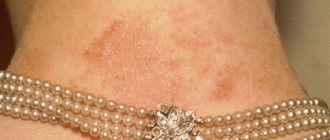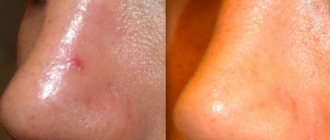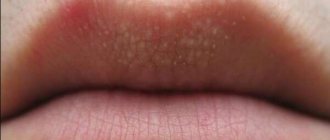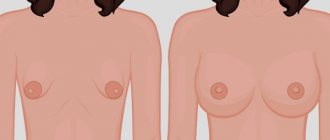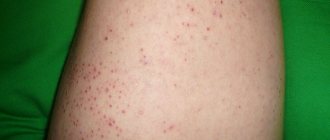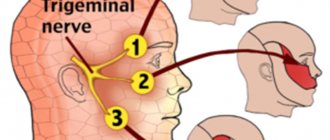At absolutely any age, white spots can form on different parts of the face. Most often they are localized in the mouth, around the eyes and nose. Moreover, such small white neoplasms appear not only on skin that is prone to oiliness. These dense nodular formations can significantly spoil a person’s appearance. And therefore, information on how to get rid of white spots on your face will be useful. You can also use folk remedies to remove white spots on the face.
Cause of warts on the back
The formation of a growth can be influenced by human papillomaviruses (HPV).
Doctors identified and numbered all HPVs so that they could navigate the complexity and danger of the disease. Growths on the soles of the feet provoke subtypes 1-4, and strains 6, 11, 16, 18 are prone to degeneration into oncology. The virus enters the body after close contact with an infected person or when sharing personal objects with him.
Incubation of the disease can drag on for years, but under the influence of provoking factors the virus becomes more active. It can be:
- infectious and inflammatory diseases,
- imbalance of hormones,
- chronic lack of sleep, fatigue, lack of time to rest and restore the body’s strength,
- frequent stress.
Why they form: the main reasons
Abscesses on the body are a consequence of the activity of pathogenic microorganisms such as staphylococci, streptococci, pneumococci, mycoplasmas and gonococci.
Small and large purulent pimples in adults and children require special attention, since they often cause dangerous complications, including a high risk of purulent fluid entering the blood. A common cause of a purulent pimple lies in the penetration of infection into an existing wound or small cracks in the skin. Also, small, red ulcers are a consequence of the influence of the following negative factors:
- insufficient skin care;
- deviations in metabolic processes;
- disturbed balance of hormones in the body;
- inflammatory reactions of various localizations;
- herpes virus infection;
- signs of scabies;
- psoriasis;
- regular hypothermia or overheating of the body;
- symptoms of diabetes mellitus, which affects metabolism;
- deviations from the central nervous system;
- allergic reaction;
- problems with the production of skin secretions.
Return to contents
Types of warts on the back, stages of growth
The appearance of a wart depends on the type of HPV, and therefore the same clinical pictures are rarely found in patients.
But all warts have similar signs:
- the diameter almost never exceeds 2 cm,
- tendency to multiple infestations - they merge into groups and form a warty area on the body,
- semicircular warts form on the back,
- the growths are dense to the touch, the surface is rough,
- shade from beige to dark brown, almost black.
The appearance of the tumor will depend on the type. On the back, as a rule, the following types are formed:
- acanthonic or cutaneous horn, which has a tendency to transform into oncology,
- adenomatous warts that merge into groups,
- keratonic large growths up to 2-4 cm in diameter. Under the influence of sunlight, their multiple seeding occurs,
- mixed.
Papilloma on the back does not form immediately. To finally grow, there are several stages of development:
- Spot – In older people, yellow or brownish spots may form on the back. These are not warts yet, but pigmentation, the intensity and volume of which increases with age.
- Papular form. Upon careful examination, papules and blisters can be seen on the back. They are very small, but rise above the skin. Such formations appear at the site of the spots.
- A keratoma is a peculiar round-shaped growth of a gray or brown hue. The wart rises only a few millimeters, and horny scales can already be discerned on the surface. When scraped they bleed.
- A cutaneous horn is a growth that quickly increases in size and becomes keratinized. This stage is rare and is shaped like a cone. The growth is not dangerous if it is not injured, otherwise it will degenerate into oncology.
Stages of development
Sometimes a person does not notice that a wart has begun to develop on the skin. Especially if it is located on the back. In its development it goes through 3 stages:
- In the first stage, flat warts darken and form pigment-like spots on the back. They have a smooth and even surface with clear edges.
- Next, the growth protrudes above the surface of the skin, and papules and nodules become visible on it.
- At the third stage of the disease, warts on the back have a scaly top. If they are not treated, then the scales can be torn off from above, and blood appears. This can subsequently lead to infection. Infection in a damaged growth is a serious complication.
Most often, brown spots, which characterize the first stage of the disease, appear in people over 50 years of age. This is especially true for those who spent a lot of time in the sun and their back often gets sunburned.
Diagnostics
Diagnosis is carried out by a dermatologist. Even with visualization, he can draw conclusions about the form of the disease and its manifestations.
To clarify the nature of the growth, it is scraped. Sometimes a biopsy is needed, the results of which reveal whether the wart is benign or malignant.
Other diagnostic methods:
- MRI,
- cytological examination,
- PCR - polymer chain reaction - identifies the type of viral pathogen,
- histology – allows you to determine the risks of degeneration,
- blood tests,
- radiography.
Based on the diagnostic results, the doctor prescribes medications and other methods of therapy. Self-medication can lead to side effects and irreversible complications.
What is the danger of papillomas
Many patients with papillomas are interested in the question: how can pathology be dangerous? In itself, such a deviation does not require special treatment, but sometimes it is necessary.
The main thing to know is that it is forbidden to remove warts yourself. If they itch, you need to go to the doctor. Scratching and other mechanical damage provoke growth or even degeneration into oncology. 10% of keratomas already contain cancer cells.
Only a specialist can detect malignancy after histological examination. Sometimes papilloma on the back becomes the cause of infection and the development of inflammation. The most dangerous are voluminous growths, convex, with a loose structure. When such a formation is injured, bleeding occurs, infection and subsequent growth occur.
Types of growths
In medicine, there are more than 100 types of papilloma formations, which are classified into groups. They all have their own characteristics and typical locations. In most cases, the following types are diagnosed:
- Simple. They look like hard growths ranging in size from 1 to 5 cm. They are more often found in young people, localized on the fingers, palms, and the inside of the knees. These are benign formations that do not cause discomfort and sometimes disappear spontaneously. But they can spread throughout the body, so it is better to consult a doctor in a timely manner.
- Flat. They usually appear in open areas - face, neck, hands. The growths hardly protrude above the skin level and do not differ in color. This is the cunning of the species. When they become inflamed, then they can be detected: itching and redness appear.
- Plantar. Characterized by pain, itching and peeling. A small shiny growth with a specific rim causes discomfort when walking.
- Threaded papillomas form on the body mainly in women after 40 years of age in the form of light yellow nodules. Locations: neck, armpits, eyelids. Such papillomas grow up to 6 mm long.
- Pointed. They are the most dangerous of all formations. Their usual locations are on the genitals and mucous membranes. They look like a mushroom on a thin stalk attached to the body. They come in pink or flesh color.
By appearance, a specific papilloma can be classified into any group. But only a specialist can accurately determine the type of neoplasm and the cause of its appearance by ordering a full comprehensive examination.
Drug treatment of papilloma on the back
There are many medications available for the treatment of papillomas over the counter in pharmacies. It is important to remember that the causes and treatment of pathology are inextricably linked. You should be careful when treating a wart with pharmaceutical drugs, as they harm healthy skin around the growth. Such medications are:
- Feresol,
- Cryopharma,
- Salicylic acid,
- Super Celandine.
The doctor may prescribe a course of antiviral and immunostimulating tablets:
- Anaferon,
- Amizon,
- Isoprinosine.
Taken together, such drug therapy helps relieve the symptoms of papillomavirus and improve the functioning of the immune system, getting rid of the problem without surgical intervention.
Treatment of pathology
Even the smallest white dots, including single ones, are not just a cosmetic defect, but a skin disease that requires complex treatment. In medicine, such neoplasms on the face are called milia. People call them millets. How to remove whiteheads on the face? To quickly get rid of these unpleasant formations, it is necessary to apply certain medications. But at the same time, they should not be used independently, without the permission of a dermatologist.
As a rule, such drugs should be prescribed by a dermatologist only after a full examination and identification of the main cause of the formation of dots on the face.
Medications
This includes means aimed at reducing keratinization, reducing sebum production, and also dissolving formations.
Preparations that contain lactic and salicylic acids.
- Azelaic acid or Skinoren.
- Any zinc ointment.
- Tar ointment or cream.
- Boro-norm.
External remedies for severe cases
External agents include antibacterial ointments, which are prescribed if the white formations have purulent contents. Similar ointments include the following:
- Metrogil-gel.
- Clindamycin ointment.
- Erythromycin ointment.
- Delacin-gel.
- Ointments and creams containing retinoids.
The latest external remedies, as a rule, are prescribed in particularly severe and advanced cases that are not amenable to basic therapy.
Modern removal methods
It is recommended to remove a wart in the back area because this part of the body often rubs against clothing. This can lead to injury to the growth and cause complications. Modern methods of quickly and effectively removing papillomas include:
- laser destruction - it quickly evaporates the wart and does not affect nearby tissues. The removal itself is painful; the doctor independently regulates the depth of irradiation. There is no blood, and no scars remain at the site of the growth,
- Excision of a wart using radio waves is a non-contact effect on the growth with high temperatures. The death occurs instantly, but leaves behind a small burn, which subsequently becomes crusted over. This method is bloodless, does not cause infection, and complete healing occurs within a maximum of 2 weeks.
- electrocoagulation - the wart is cauterized with high-frequency current. Before the procedure, anesthesia is given. The method is not suitable for large growths,
- cryodestruction – is the treatment of a wart with liquid nitrogen. The method is also not suitable for large growths. During the implementation process, the patient feels a slight burning and tingling sensation, but afterward the risks of relapse remain. Recovery takes no more than 14 days.
Traditional methods
Sometimes doctors allow treatment using traditional medicine methods. As a rule, the following are used for this: aloe, celandine, vinegar, onion, rowan, dandelion.
6 tips:
- The wart is lubricated with celandine juice every other day. It goes away after just 5-6 procedures.
- Rub the growth with a cut of garlic and seal the thin plate of the clove with a plaster. Carry out the procedure 3 times a day.
- Apply a drop of vinegar directly to the wart. If it is acid, then after one procedure the growth will disappear. When using table vinegar, treatment should be carried out daily until the result is achieved.
- Cut an aloe leaf lengthwise and attach it to the wart with a bandage. In the morning, remove the bandage and clean off the loose scales.
- Apply tea tree oil to the growth every day. In case of severe burning, dilute the composition with water.
- Horseradish juice is mixed with salt and applied to the wart. It is recommended to do the procedure before bedtime.
When implementing traditional medicine methods, you will need to be patient, since the effect will appear only after a few weeks.
Preventive measures
If HPV is present in the human body, then warts cannot be completely cured. Rarely, but they will still appear in different places. But to prevent relapses, it is necessary:
- Protect your back from strong exposure to ultraviolet radiation.
- Do not injure areas where there are warts.
- Monitor your immune system.
- Try to lead a healthy lifestyle.
- Include foods enriched with vitamins in your diet. Take vitamin complexes as needed.
Doctors advise people with papillomas to eat right, since it is often a violation of the diet that provokes the formation of warts. If a virus infection has occurred, then a correct lifestyle will prevent relapses.


